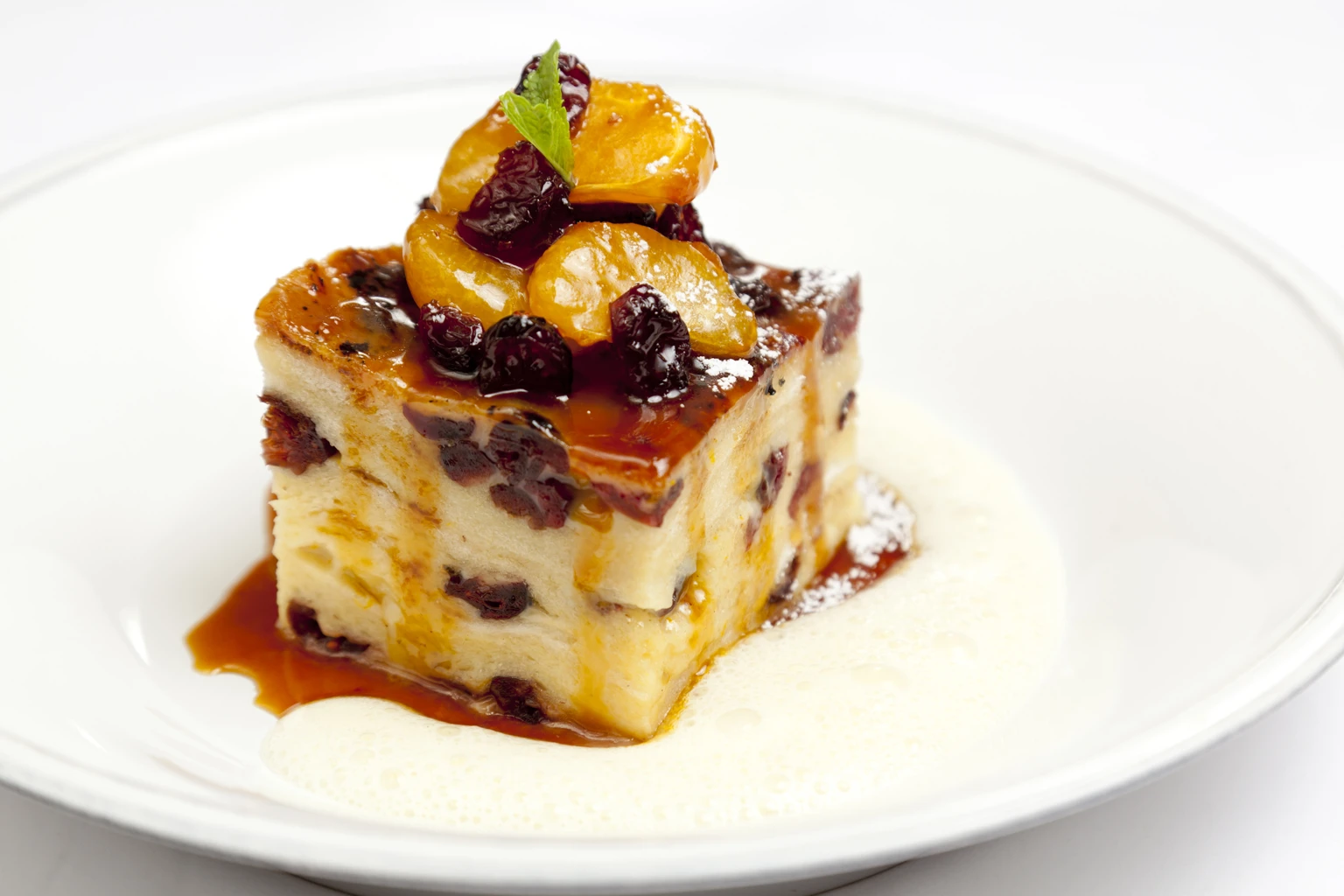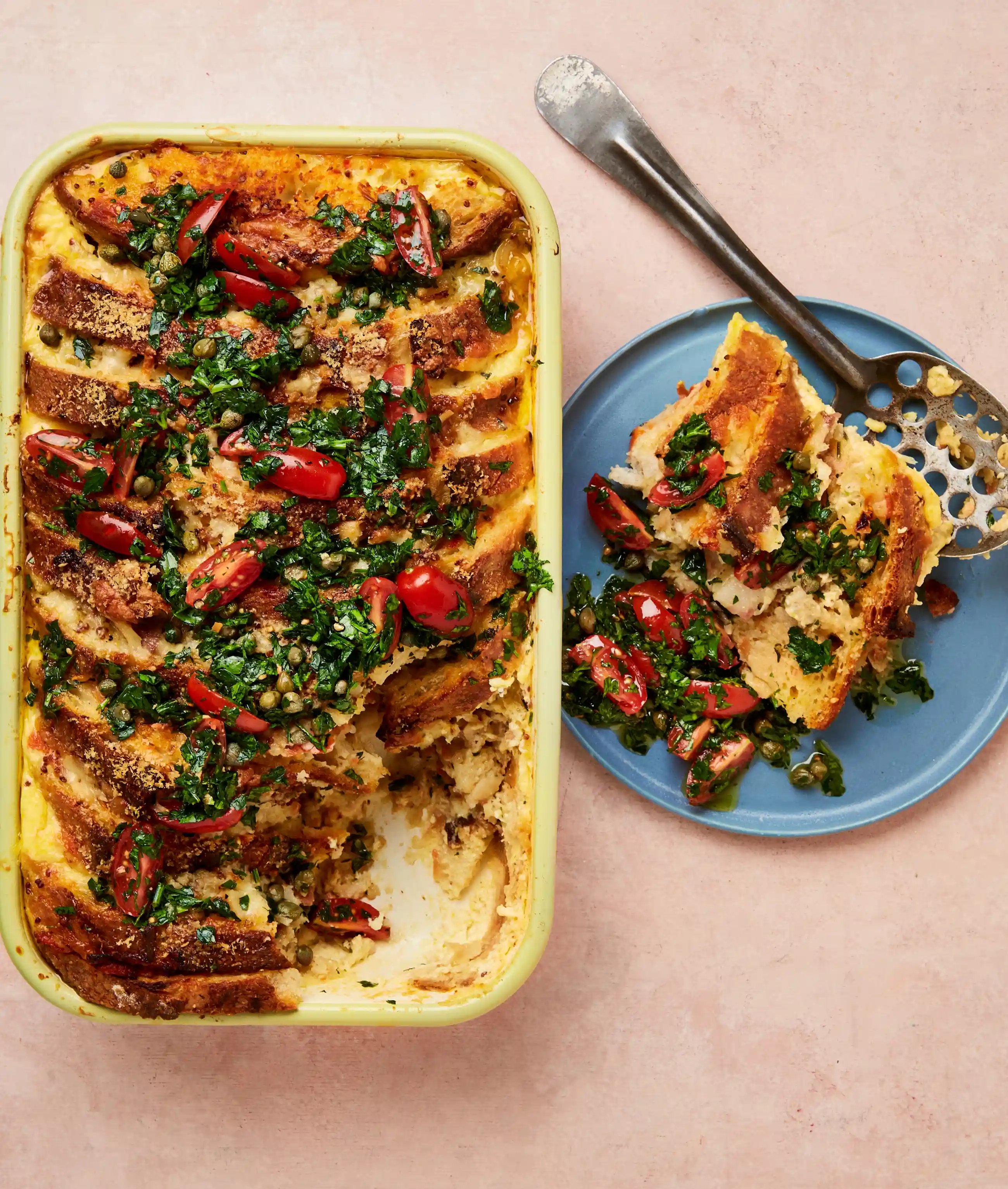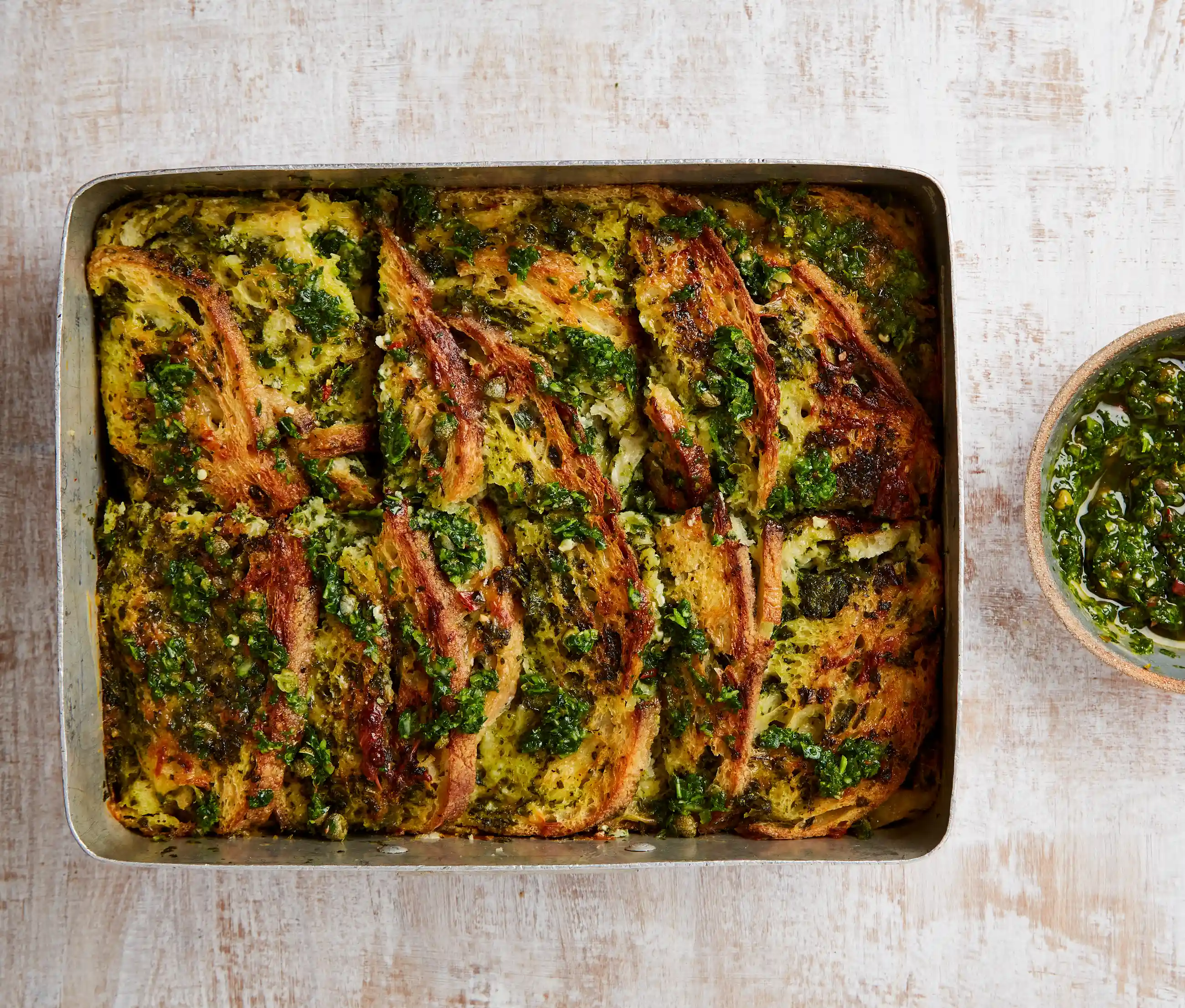Mundane to trendy and back to mundane
- rosemary
- May 21, 2023
- 5 min read
"blandly milky, comfortingly stodgy, and just the thing to use up all the staling half loaves left hanging around by Christmas guests who can't see an untouched item of food without taking a bite." Felicity Cloake
I'm talking about bread and butter pudding folks. Not bread pudding, although it will get a mention - no bread and butter pudding and all the variations thereof - traditional, fancy and everyday. Well some of them. And this is not going to include a whole list of recipes because there are probably literally millions of them out there on the world wide web and anyway, once you have the basics you just make it up.

I'm also not sure I will have much to say but I will try. Source of inspiration? Dinner tonight is leftovers - this Antipasto strata with dill gremolata which I came across in Taste when I was talking about salami the other day. And pretty delicious it was too. Now strata is not your true blue British bread and butter pudding but it's sort of where we are at today.
This is a kind of evolution story I suppose. As all food is when you think about it. Throughout history, with the odd pause here and there, man has been constantly looking for something new. It seems we all get bored. So we start with something simple and elaborate and elaborate until we end up with something that sometimes has only the tiniest element of the first simple thing in it.

And here's my mention of bread pudding. The version on the left is Delia's and on a quick look through Google Images was the closest that I could see to the version that we occasionally had at home. I cannot now quite remember how it was made by my mother and grandmother, but I think bread was soaked in water and then beaten into a pulpy sort of mass with some sugar and spices - quite a lot I think because the whole thing ended up looking brownish like Delia's here. If we had some, some sultanas, currants and raisins were stirred in. It was put in a dish topped with crunchy sugar and baked in the oven. Delia soaks her fruit in brandy and soaks the bread in milk, and maybe my mother did too, but I think it may well have been water. The key thing is that it wasn't slice bread but bread that had been beaten into that pulp which meant that you ended up with something more solid than the traditional bread and butter pudding.
This kind of bread pudding is very old - dating back to the Middle Ages - when it was known as 'poor man's pudding'. Sometimes bits of leftover bread were dumped in a pudding dish ready for making into a pudding when enough had been collected.
An aside for a mildly funny story. For some reason, my mother was not cooking - she must have been ill. And my father was cooking - David was visiting and he remembers this too. Dad decided to cook a bread pudding, but forgot to add any spices, or sugar or fruit. So when it came out of the oven it looked really good. An appetising brown colour - so perhaps he added some spices - and crusty on top - but oh so tasteless. It was just cooked pulpy/stodgy bread. We all had a good laugh at his expense. He would have learnt from it though. If he made it again, I'm sure he added the good things that made it a favourite dessert.
Moving on to the 17th and 18th centuries:
"When more luxurious produce - such as eggs, milk, sugar and butter - became readily available, the bread and butter pudding was born" Gourmet Traveller

At its simplest bread and butter pudding is stale slices of bread spread with butter, layered in a pie dish with dried fruit, covered with a sweetened custard and baked. And you know I think sometimes ours were simply soaked with sweetened milk, not even custard. But I could be wrong on that account. It's comfort food and therefore relatively bland because yes I think bland is a common feature of most comfort foods.
"bread and butter pudding's chief characteristic, in my opinion, ought to be creamy blandness" Felicity Cloake
And so it was for decades, until we started to mess with it. Initially by just adding jam or honey or marmalade - and here I must say that the most delicious version that I have made so far included marmalade and I'm not a fan of marmalade. It might have been a Nigel Slater recipe. Then invention proliferated not just in what was thrown in with the bread or spread upon it, but also with the breads that were used - brioche, pannetone, croissants, hot cross buns, basically anything that could loosely be called bread. And some of them were/are gorgeous and served in the poshest of posh restaurants by the poshest of chefs: Curtis Stone, Paul Heathcote, Heston Blumenthal to name but a few.
High comfort indeed. Actually haute cuisine fashioned from simple poverty fare.
Then to top that we discovered strata. In 1902 in fact. I confess I thought that strata was an Italian dish - a slightly different evolution from an Italian equivalent of the bread pudding, because surely they had one. But no - it is yet another Italian American invention. And what is it? Well fundamentally a savoury version of a bread pudding with endless variations and becoming increasingly popular, partly I think because of the rise of vegetarianism. A veggie filled strata makes a superior looking main dish. So being lazy, I just checked out three Ottolenghi versions, because I know he's into strate - tomato and capers, kale gruyère and mustard, and zucchini:
These days you can barely open a foodie magazine or watch a TV cooking program without at some point coming across a variation on bread and butter pudding whether it be called a pudding, a strata a cake or a frittata. The fundamental process - soaking stale bread like substances in something - and then baking it - is always the same.
Maybe you can only devise such elaborations from something really, really, simple. Maybe if you start with something complicated you can't be as inventive? No I think that's probably not true. It's just that we are novelty seekers, increasingly perhaps, or, put more politely, we are supremely creative, ever-seeking to improve on what we know.
And at some point that widespread inventiveness, tinkering, elaboration - call it what you will - becomes so ubiquitous that it is mundane once again.
I wonder where next with bread and butter pudding.














Yorumlar